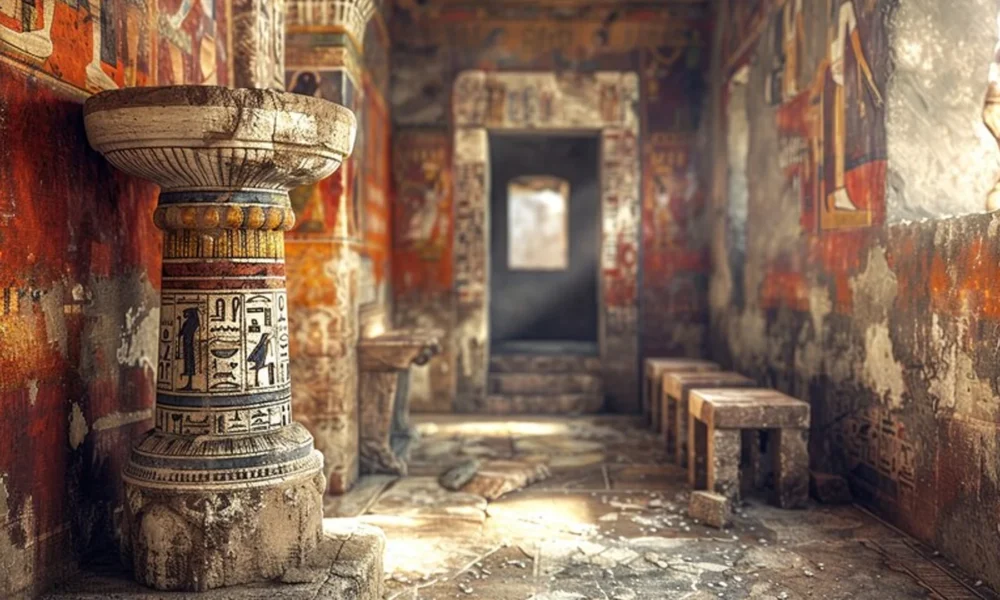Art is a universal language that has evolved alongside humanity. Ancient Artz, encompassing the art forms created in early civilizations, is more than just aesthetic expression—it’s a window into the values, beliefs, and stories of the past. From the towering pyramids of Egypt to the intricate pottery of the Minoans, Ancient Artz reveals a world rich in imagination and cultural depth.
What is Ancient Artz?
Ancient Artz refers to the art and artifacts produced by early human societies, often characterized by their symbolic, religious, and utilitarian significance. These works capture the essence of their times, from the earliest cave paintings to the grandiose sculptures of the classical era.
The Origins of Ancient Artz
Cave Paintings and Early Symbolism
The earliest examples of art date back to the Paleolithic period, with cave paintings found in locations like Lascaux, France, and Altamira, Spain. These primitive works depict animals, hunting scenes, and abstract symbols, providing a glimpse into the lives of early humans.
The Neolithic Revolution
With the advent of agriculture, art evolved to reflect new societal structures. Ceramics, carvings, and megalithic structures like Stonehenge became central to cultural and religious practices.
Key Civilizations and Their Contributions
Egyptian Art: Eternal Monuments
Egyptian art is synonymous with grandeur. The civilization’s contributions include:
- Pyramids: Monumental tombs that reflect the Egyptians’ belief in the afterlife.
- Hieroglyphs: A writing system that blends art and language.
- Sculptures: Statues like the Great Sphinx symbolize power and divinity.
Mesopotamian Masterpieces
The cradle of civilization brought forth:
- Ziggurats: Religious temples showcasing architectural innovation.
- Cylinder Seals: Small, engraved objects used for administrative purposes.
Greek and Roman Innovations
The classical era is renowned for its:
- Sculptures: Idealized human forms, as seen in the works of Phidias and Praxiteles.
- Architecture: Temples like the Parthenon and the Colosseum, exemplifying balance and harmony.
Asian Art: Spiritual Depth
In the East, ancient art took on a spiritual and philosophical dimension:
- Chinese Ink Paintings: Delicate landscapes capturing harmony with nature.
- Indian Sculptures: Religious icons of deities like Shiva and Vishnu.
The Techniques Behind Ancient Artz
Materials and Tools
Ancient artists worked with natural resources, including:
- Stone, wood, and clay for sculptures.
- Natural pigments for painting.
- Metals like bronze and gold for ornaments.
Innovative Methods
Despite technological limitations, ancient artists developed groundbreaking techniques:
- Fresco Painting: Used in Minoan palaces and Roman villas.
- Lost-Wax Casting: A method for creating intricate bronze sculptures.
The Role of Ancient Artz in Society
Religious Significance
Many ancient art forms were deeply tied to religious practices. Temples, idols, and ceremonial objects played a central role in worship and rituals.
Storytelling and Communication
Art served as a means of recording history and sharing stories. From Egyptian hieroglyphs to the bas-reliefs of Mesopotamia, these works narrate tales of gods, kings, and conquests.
Symbol of Power
Rulers often commissioned grand works to showcase their authority. The towering statues of pharaohs and the detailed mosaics of Roman emperors are prime examples.
Legacy of Ancient Artz
Influence on Modern Art
The principles of proportion, symmetry, and storytelling from ancient art continue to inspire contemporary artists and architects.
Preservation and Archaeology
Efforts to preserve ancient art have unveiled fascinating insights into lost civilizations, fueling our understanding of human history.
Cultural Identity
For many communities, ancient art is a source of pride and a symbol of their cultural heritage.
Reviving Ancient Artz in the Modern World
Education and Awareness
Art schools and museums worldwide are keeping the legacy of Ancient Artz alive by teaching its techniques and history.
Digital Preservation
Modern technology, like 3D scanning and virtual reality, is being used to recreate ancient artifacts and sites, making them accessible to global audiences.
Inspiration for New Creations
Contemporary artists often draw inspiration from ancient motifs and techniques, bridging the gap between past and present.
Conclusion: The Timeless Allure of Ancient Artz
Ancient Artz is more than a historical record; it’s a testament to humanity’s creative spirit and enduring quest for meaning. By studying and preserving these masterpieces, we not only honor our ancestors but also enrich our understanding of ourselves. Whether through the brushstrokes on a cave wall or the towering majesty of a temple, the art of antiquity continues to speak to us, reminding us of our shared heritage and boundless potential.
FAQs
What is the importance of Ancient Artz in modern times?
Ancient Artz provides insight into early human cultures, influences modern art, and serves as a connection to our shared past.
Which civilizations contributed most to Ancient Artz?
Notable civilizations include Ancient Egypt, Mesopotamia, Greece, Rome, and China, each offering unique contributions to art and culture.
What materials were used in creating Ancient Artz?
Common materials included stone, clay, wood, metals, and natural pigments, showcasing resourcefulness and creativity.
How are ancient art forms preserved today?
Through archaeological efforts, museum curation, and digital technologies like 3D modeling and virtual reality.
Can Ancient Artz still inspire modern artists?
Absolutely. Many modern creators draw from ancient techniques, motifs, and themes to craft their work.
Why is cultural sensitivity important in interpreting Ancient Artz?
It ensures accurate representation of the original creators’ intent and respects the cultural significance of the works.



